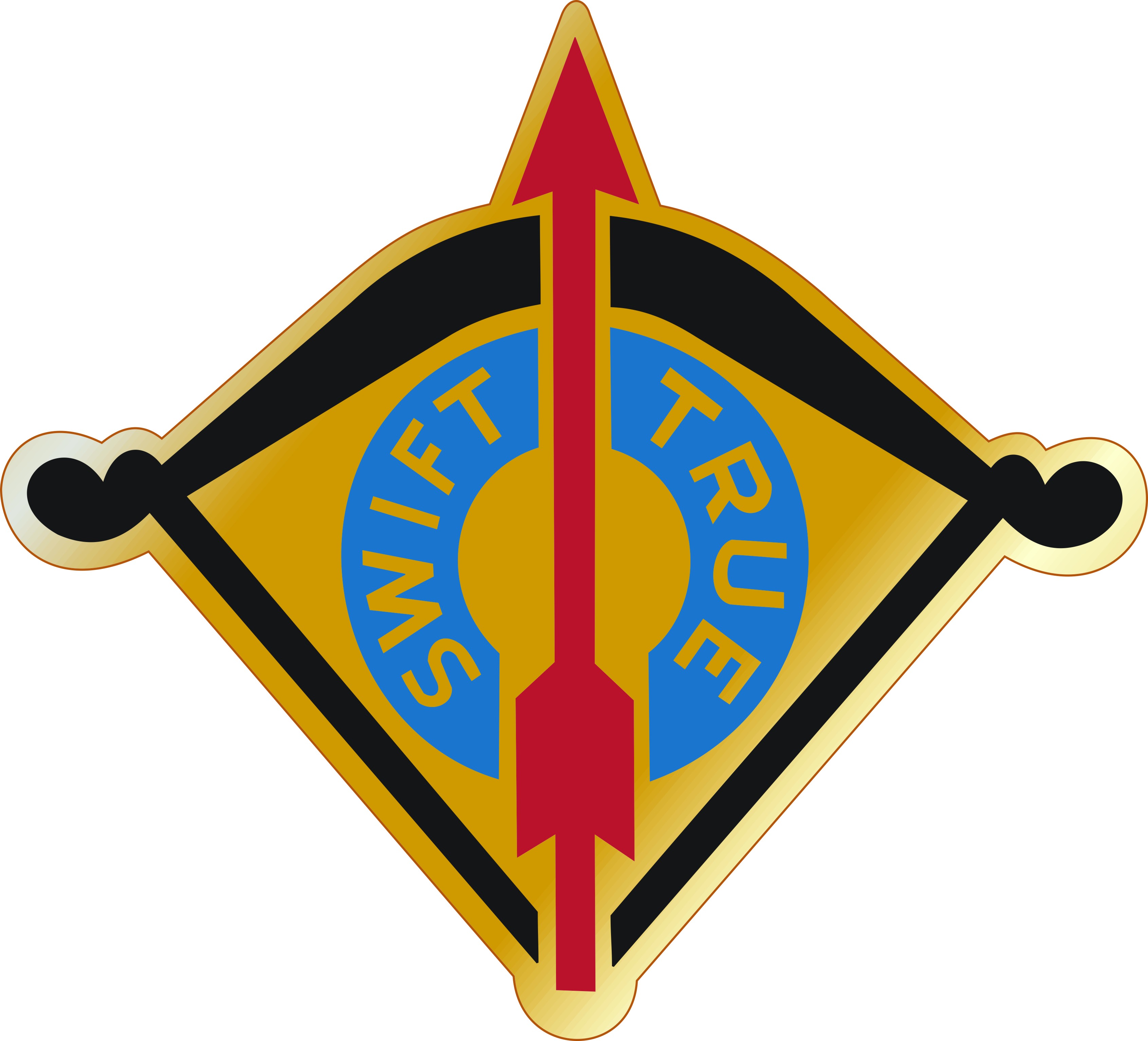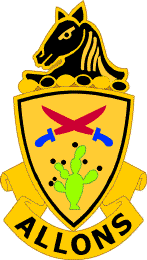|
Task Force Oregon
Task Force Oregon, was a United States Army division-sized unit composed of 3 separate infantry brigades, active in Quß║Żng Ng├Żi and Quß║Żng T├Łn Provinces, South Vietnam from April to September 1967 when it was redesignated the 23rd Infantry Division (Americal). Purpose and composition In early April 1967 MACV gave instructions to commence the Task Force Oregon plan, which involved the movement of an Army task force to ─Éß╗®c Phß╗Ģ and Chu Lai area to allow the 1st Marine Division to move north to Danang to support the 3rd Marine Division in northern I Corps. COMUSMACV General William Westmoreland appointed his chief of staff MG William B. Rosson to command the unit, designated Oregon after Rosson's home state. MG Rosson reported directly to III Marine Amphibious Force which controlled I Corps, however he was generally free to manoeuvre his brigades subject to maintaining the defense of Chu Lai Air Base. Task Force Oregon originally comprised the following units ... [...More Info...] [...Related Items...] OR: [Wikipedia] [Google] [Baidu] |
Regular Army (United States)
The Regular Army of the United States succeeded the Continental Army as the country's permanent, professional land-based military force. In modern times the professional core of the United States Army continues to be called the Regular Army (often abbreviated as ŌĆ£RAŌĆØ). From the time of the American Revolution until after the SpanishŌĆōAmerican War, state militias and volunteer regiments organized by the states (but thereafter controlled by federal authorities and federal generals in time of war) supported the smaller Regular Army of the United States. These volunteer regiments came to be called United States Volunteers (USV) in contrast to the Regular United States Army (USA). During the American Civil War, about 97 percent of the Union Army was United States Volunteers. In contemporary use, the term Regular Army refers to the full-time active component of the United States Army, as distinguished from the Army Reserve and the Army National Guard. A fourth component, the Arm ... [...More Info...] [...Related Items...] OR: [Wikipedia] [Google] [Baidu] |
COMUSMACV
U.S. Military Assistance Command, Vietnam (MACV) was a joint-service command of the United States Department of Defense. MACV was created on 8 February 1962, in response to the increase in United States military assistance to South Vietnam. MACV was first implemented to assist the Military Assistance Advisory Group (MAAG) Vietnam, controlling every advisory and assistance effort in Vietnam, but was reorganized on 15 May 1964 and absorbed MAAG Vietnam to its command when combat unit deployment became too large for advisory group control. MACV was disestablished on 29 March 1973 and replaced by the Defense Attach├® Office (DAO), Saigon. The DAO performed many of the same roles of MACV within the restrictions imposed by the Paris Peace Accords until the Fall of Saigon. The first commanding general of MACV (COMUSMACV), General Paul D. Harkins, was also the commander of MAAG Vietnam, and after reorganization was succeeded by General William C. Westmoreland in June 1964, followed by ... [...More Info...] [...Related Items...] OR: [Wikipedia] [Google] [Baidu] |
Ad Hoc Units And Formations Of The United States Army
Advertising is the practice and techniques employed to bring attention to a product or service. Advertising aims to put a product or service in the spotlight in hopes of drawing it attention from consumers. It is typically used to promote a specific good or service, but there are wide range of uses, the most common being the commercial advertisement. Commercial advertisements often seek to generate increased consumption of their products or services through "branding", which associates a product name or image with certain qualities in the minds of consumers. On the other hand, ads that intend to elicit an immediate sale are known as direct-response advertising. Non-commercial entities that advertise more than consumer products or services include political parties, interest groups, religious organizations and governmental agencies. Non-profit organizations may use free modes of persuasion, such as a public service announcement. Advertising may also help to reassure employees ... [...More Info...] [...Related Items...] OR: [Wikipedia] [Google] [Baidu] |
198th Infantry Brigade (United States)
The 198th Infantry Brigade, was first formed as part of the United States Army Reserve's 99th Division. It was active from 1967 through 1971 and has been active since 2007 as an Infantry Training Brigade as part of the US Army Infantry School at Fort Benning, Georgia. Operational history Vietnam War During the years of 1967ŌĆō1971 as part of the Vietnam War the 198th was part of the United States Army's 23rd "Americal" Infantry Division. In 1968, elements of the 198th Infantry Brigade, under the leadership of Lieutenant Colonel Robert B. Nelson, participated in the Battle of Kham Duc. On 21 November 1969, Colonel Joseph G. Clemons, (of Pork Chop Hill fame), assumed command of the 198th Infantry Brigade. Order of battle *Headquarters & Headquarters Company * 1st Battalion, 6th Infantry * 1st Battalion, 46th Infantry * 5th Battalion, 46th Infantry * 1st Battalion, 52nd Infantry * 4th Battalion, 3rd Infantry (1971) * 1st Battalion, 14th Artillery *9th Support Battalion ... [...More Info...] [...Related Items...] OR: [Wikipedia] [Google] [Baidu] |
11th Infantry Brigade (United States)
The 11th Infantry Brigade is an inactive infantry brigade of the United States Army. It was first formed as part of the 6th Division during World War I. It is best known for its service with the 23rd Infantry Division from 1967 through 1971 in the Vietnam War as a light infantry brigade. The brigade is known for its responsibility in the My Lai Massacre. History World War I The headquarters of the 11th Infantry Brigade was constituted on 16 November 1917 in the Regular Army as part of the 6th Division and organized on 4 December at Camp Forrest. The brigade included the 51st and 52nd Infantry Regiments, as well as the 17th Machine Gun Battalion. The 51st and 52nd were formed in June of that year from personnel of the 11th Infantry Regiment. The Brigade began its overseas service in June 1918 and spent 43 days in combat in France. It was commanded by Brigadier General William Dashiell. After the end of the war, it spent six months on occupation duty with the 6th Division ... [...More Info...] [...Related Items...] OR: [Wikipedia] [Google] [Baidu] |
III Corps (South Vietnam)
III Corps () was a corps of the Army of the Republic of Vietnam (ARVN), the army of the nation state of South Vietnam that existed from 1955 to 1975. It was one of four corps in the ARVN, and oversaw the region of the country surrounding the capital Saigon. III Corps was activated in September 1959 and controlled the country south of Phan Thiet excluding Saigon which was controlled by the Capital Military District. In 1962, President Ng├┤ ─É├¼nh Diß╗ćm decided to split the Corps into two, the former III Corps area being reduced in size to cover the area northeast of Saigon and the newly created IV Corps taking over the west and southwest. The Fifth Division based in Bien Hoa Bien may refer to: * Bien (newspaper) * Basic Income Earth Network * Bie┼ä, Poland {{disambiguation ... on the northern outskirts of Saigon was a part of III Corps, and due to the division's close proximity to the capital was a key factor in the success or failure of the various coup attempts in the na ... [...More Info...] [...Related Items...] OR: [Wikipedia] [Google] [Baidu] |
4th Infantry Division (United States)
The 4th Infantry Division is a division of the United States Army based at Fort Carson, Colorado. It is composed of a division headquarters battalion, three brigade combat teams (two Stryker and one armor), a combat aviation brigade, a division sustainment brigade, and a division artillery. The 4th Infantry Division's official nickname, "Ivy", is a play on words of the Roman numeral ''IV'' or 4. Ivy leaves symbolize tenacity and fidelity which is the basis of the division's motto: "Steadfast and Loyal". The second nickname, "Iron Horse", has been adopted to underscore the speed and power of the division and its soldiers. World War I The 4th Division was organized at Camp Greene, North Carolina on 10 December 1917 under the command of Maj. Gen. George H. Cameron. It was here they adopted their distinctive insignia, the four ivy leaves. The ivy leaf came from the Roman numerals for four (IV) and signified their motto "Steadfast and Loyal". The division was organized as p ... [...More Info...] [...Related Items...] OR: [Wikipedia] [Google] [Baidu] |
11th Armored Cavalry Regiment
The 11th Armored Cavalry Regiment ("Blackhorse Regiment") is a unit of the United States Army garrisoned at the Fort Irwin National Training Center in California. Although termed an armored cavalry regiment, it is being re-organized as a multi-component heavy brigade combat team. The regiment has served in the PhilippineŌĆōAmerican War, the Pancho Villa Expedition, World War II, the Vietnam War, Gulf War and Iraq War. The 11th ACR serves as the opposing force (OPFOR) for the Army and United States Marine Corps, Marine task forces, and foreign military forces that train at Fort Irwin. The OPFOR trained U.S. Army forces in mechanized desert warfare following a Soviet-era style threat until June 2002, when the OPFOR and the 11th Armored Cavalry Regiment changed to portraying an Urban warfare, urban/asymmetrical warfare style of combat U.S. soldiers are facing in operations abroad. From June to December 2003, members of the 11th ACR deployed to Afghanistan, where they helped to dev ... [...More Info...] [...Related Items...] OR: [Wikipedia] [Google] [Baidu] |
196th Infantry Brigade (United States)
The 196th Infantry Brigade ("Chargers"), also known as the Charger Brigade was first formed on 24 June 1921 as part of the United States Army Reserve's 98th Division with the responsibility of training soldiers. World War II During World War II, the 98th initially defended Kauai, Hawaii and Maui, Hawaii, and finally responsible for defending Oahu, Hawaii later in the war. The Division began intensive training in May 1945 to prepare for the invasion of Japan, but the war ended before they could depart Hawaii. However, the unit arrived in Japan for occupation duty as the 3rd Platoon, 98th Reconnaissance Troop Mechanized, of the 98th Infantry Division, where it eventually was inactivated on 16 February 1946, in Charlotte, NC. Service in the Vietnam War The brigade was reactivated in September 1965 at Fort Devens Massachusetts, where it was originally scheduled to be sent to the Dominican Republic. Instead, the Army rushed it to Vietnam, the Brigade departing on 15 July 1966 via tra ... [...More Info...] [...Related Items...] OR: [Wikipedia] [Google] [Baidu] |
101st Airborne Division
The 101st Airborne Division (Air Assault) ("Screaming Eagles") is a light infantry division of the United States Army that specializes in air assault operations. It can plan, coordinate, and execute multiple battalion-size air assault operations to seize terrain. These operations can be conducted by mobile teams covering large distances, fighting behind enemy lines, and working in austere environments with limited or degraded infrastructure.After Almost 5 Years, Army's 101st Airborne Will Return to Full Air Assault Power Military.com, by Matthew Cox, dated 16 October 2019, last accessed 24 December 2020 Its unique battlefield mobility and high ... [...More Info...] [...Related Items...] OR: [Wikipedia] [Google] [Baidu] |




